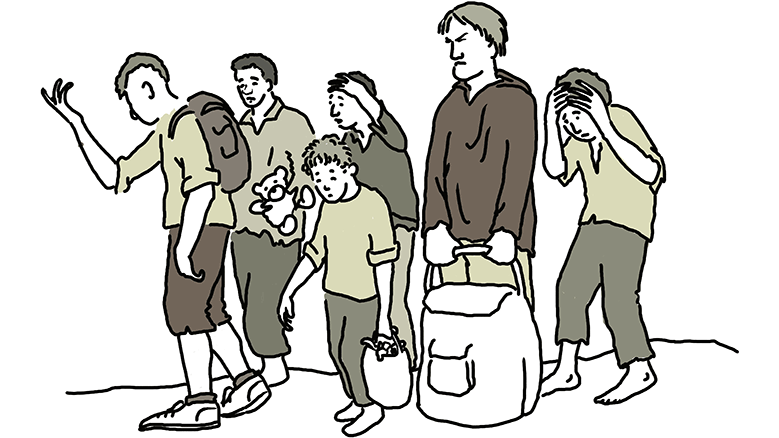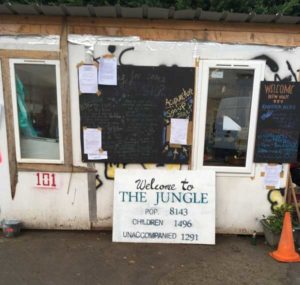
Until late last October, there was a refugee camp in Calais in northern France. Across the Channel from one of the wealthiest countries in the world, approximately 10,000 men, women, and children lived in squalor and hope. Among them at the time the camp was destroyed were approximately 1,500 unaccompanied children. They ranged in age from 8 to 18, and had come from more than 25 countries, including Syria, Iraq, Afghanistan, Somalia, and Sudan. Some of the older ones had come alone; others had lost the adult(s) who had accompanied them at the start of their difficult journeys. All hoped to go to the United Kingdom, either to join family or friends or simply to find asylum from a place where their lives had become impossible.
At that time, their fate was governed by two things: the Dublin agreements and the Dubs amendment. The Dublin agreements specified that asylum seekers are eligible to enter the UK if they have close family there. The 2016 Dubs amendment to the UK immigration law tried to broaden it to include the youngest and most vulnerable children.
The concern for vulnerable children was well founded. When the southern half of the Calais camp was destroyed last March, approximately half of the unaccompanied children disappeared, having melted into the French countryside, gotten lost in the social system, or fallen into the hands of those who would traffic them or convert them to violent ideologies.
Before the destruction of the camp at Calais, it was estimated that around 40 percent of the unaccompanied children in the camp had family in the UK, and thus had the legal right to go there under the Dublin agreements. Destruction of the camp was postponed for a week in order to allow the UK officials time to process these asylum applications. On Friday of that week of grace, a bus was scheduled to take children to their families in the UK. It was canceled with no explanation. On the following Monday, French officials began the destruction of the camp, projected to take a week.

Residents of the camp, including the children, were asked to go to a warehouse and register for transport to accommodation centers (ACs) throughout France. Children were registered but sent back to a section of the camp built out of shipping containers to await transport to the UK or to ACs. On the Monday in the predawn darkness I saw numbers of young people with backpacks melting into the darkness in the town. They were afraid of the uncertain future awaiting them in the ACs, and preferred to take their chances alone.
By the Wednesday, French officials declared that the job was done, and the camp was empty ahead of schedule. This despite the fact that there were still several hundred children and even more adults who hadn’t been registered. The registered children were sent back to the camp to wait in the shipping containers for the buses which the French officials imagined would come from the UK to get them. Those who weren’t able to register fell through the cracks of the system and are currently uncounted and unaccounted for.
Those who had been registered stayed in the containers for a week, while the governments of France and the UK passed the buck to one another and the camp burned around them. The children had no food, no water, no sanitation, no social workers, no adult supervision at all except for the police who surrounded them. It was clear that the police were there to keep them in, not to keep them safe. They were fed and cared for solely by volunteers who provided food, water, clothing, and supervision. The volunteers slept on the concrete outside the shipping containers to protect the children.
Meanwhile, the camp was being destroyed around them. One eyewitness said, “They sat inside the shipping containers and watched as their home burnt, choking on the smoke and worried for their brothers and sisters. Every responsible adult they could communicate with in their own language had been taken away on a bus.”
Eventually the UK sent officials to accompany the children to the ACs. It has been reported that many of them left the buses before they arrived at the ACs, leaving the children with no information about their fate. More children fell through the cracks as they disappeared from the buses which were carrying them to the ACs. By this time they had a profound distrust of the system which they felt had abandoned them.
A survey conducted by the charity Help Refugees in late November 2016 reported that conditions in the ACs were inconsistent. In many the accommodation, food, and activities were of good quality, but the help that the children needed to understand their options and to apply for asylum in the UK was largely unavailable. In effect, the children were being warehoused. It was left to French workers to provide the language and legal support needed for the children to complete an application in English to join the UK. This was made even more difficult by the lack of information available from the UK.
In addition the report noted that many of the children in the centers presented symptoms of depression, anxiety, and PTSD, while the centers had very little professional psychological support available.
The report states, “At no point in our research did we find evidence that the (UK) Home Office has been informing minors about the four criteria for eligibility in their guidelines. Those interviewed and found to be [not eligible] were not informed of this and continued to believe that they were eligible for transfer to the UK.”
In mid-November, the Home Office went further and gutted the Dubs amendment, severely cutting the number of children eligible to enter the UK under it. This was done after children had been told they would be able to go, prompting one group of children to file legal proceedings against the home secretary (who is roughly the equivalent of the Secretary of the Interior) and others to go on hunger strikes. Still others disappeared from the ACs.
By the end of the year, only a few hundred children from Calais had been transferred to the UK. The rest continue to wait, with no answers, no information, no hope.
Currently it is estimated that between one-third and half of the children in ACs in France have disappeared. Some have slipped away to make their way back to Calais where they hope to get to the UK by illegal and dangerous means. Others may have fallen into the hands of traffickers. Still others may be on the road to violent futures. There are many cracks they can fall into. Surely in a civilized society we can do better for the children of Calais.
Author’s note: The Guardian reports that the accommodation centers will all close on February 10, with no indication of what provisions may have been made for the kids. I have heard similar things from other sources, but with slightly later dates. It’s hard to get good information.
Quaker Council for European Affairs (QCEA), together with the Quaker Asylum and Refugee Network (QARN), have published a report on Friends’ efforts to respond to the influx of displaced persons in Europe. “Quaker Faith in Action: Friends’ work in the area of forced migration” builds on feedback from Quaker respondents across Europe, and explores the important work done by individuals, meetings, and organizations in response to this unprecedented humanitarian challenge.



Comments on Friendsjournal.org may be used in the Forum of the print magazine and may be edited for length and clarity.